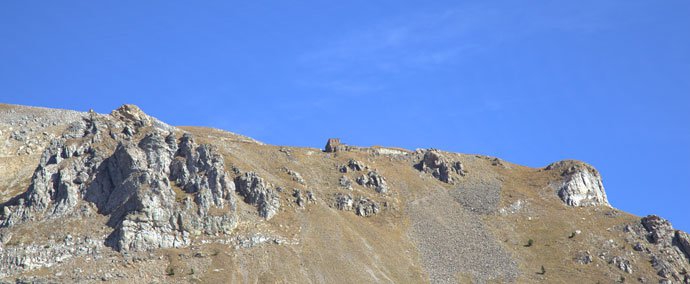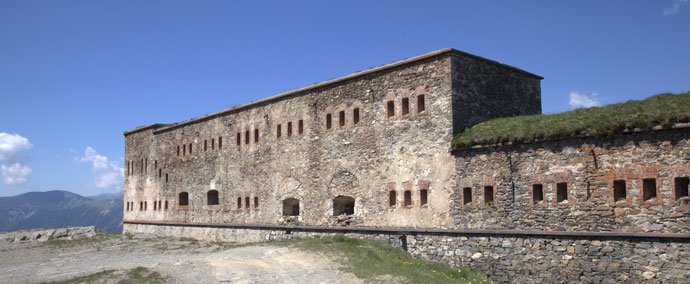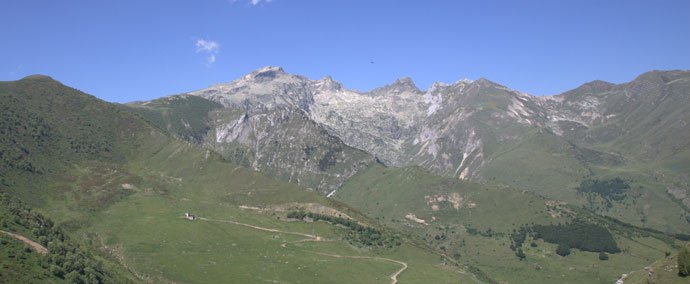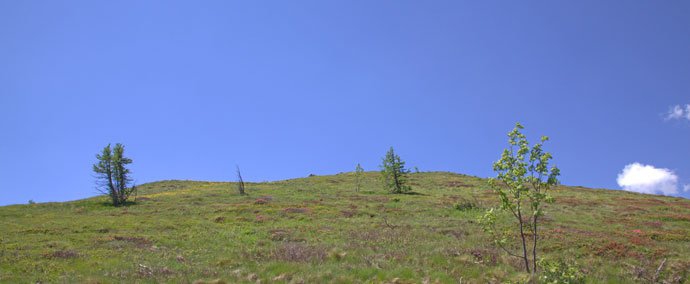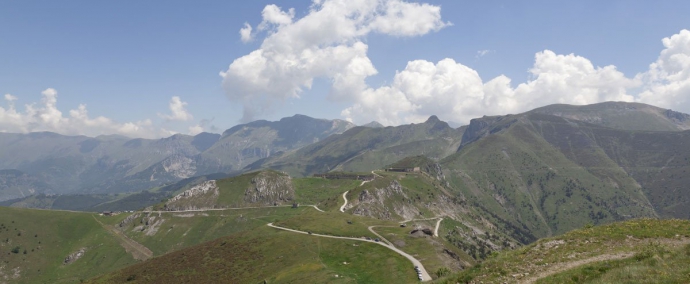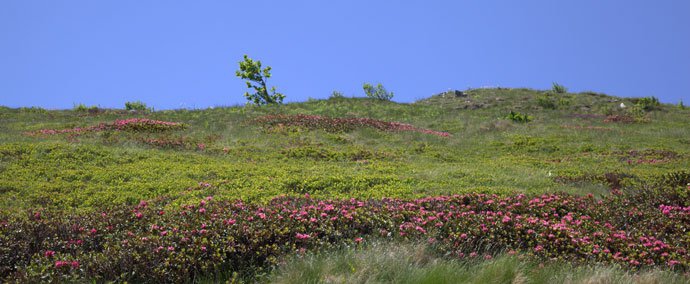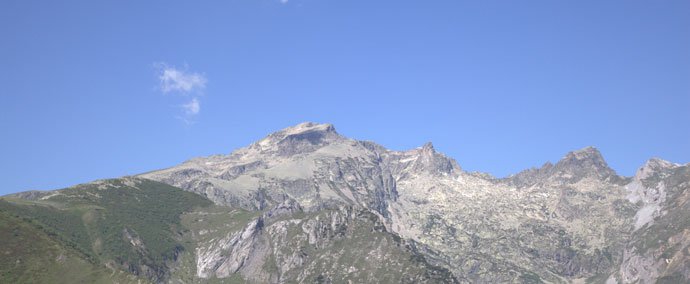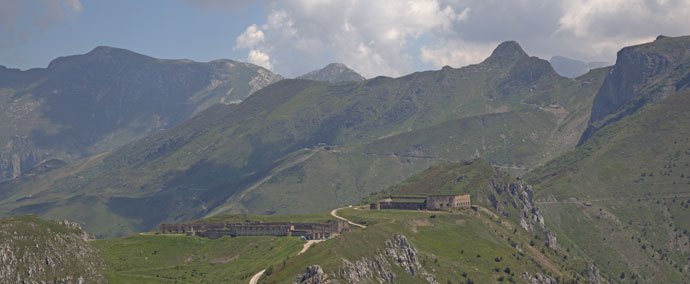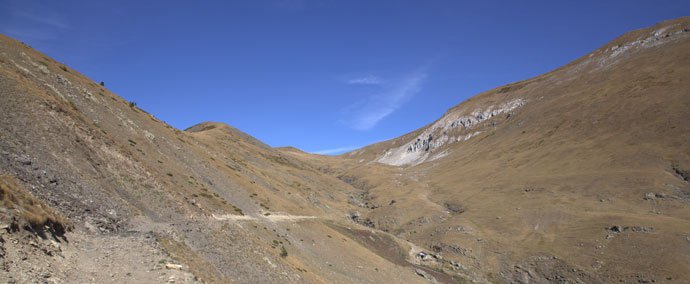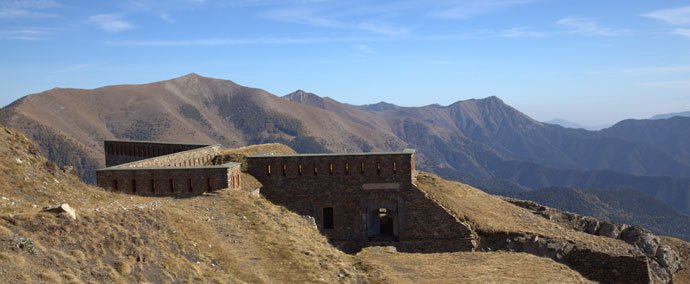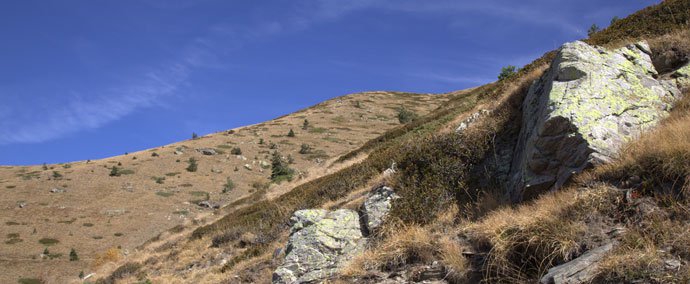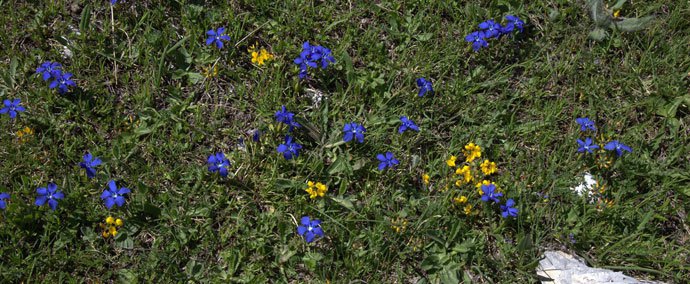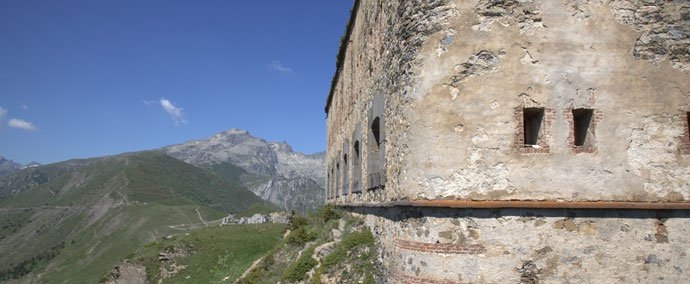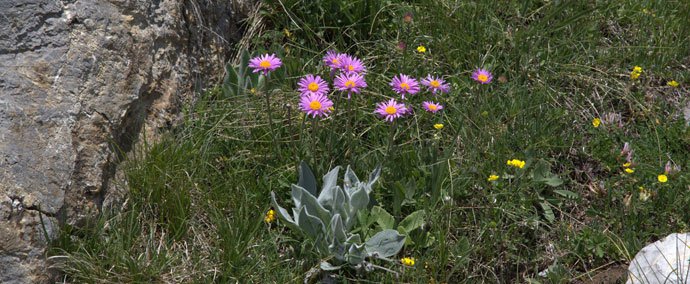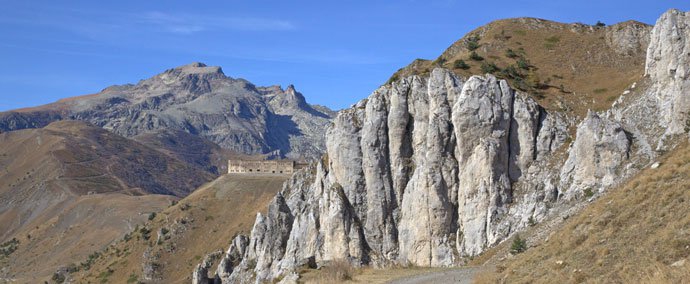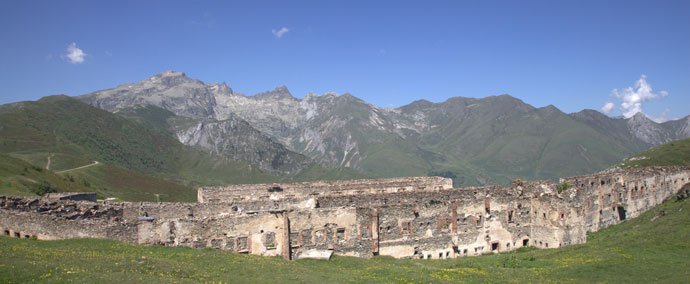Escapade Le col de Tende
Access: From Nice, take the motorway to Ventimiglia and then the Roya Valley tunnel to the Col de Tende.
Take the track to the left just before the tunnel or the road on the left just outside the tunnel.
Le Col de Tende: an air of Mongolia

With mountains as far as the eye can see and abandoned forts that still impress, Le Col de Tende mountain pass is an unusual place. It boasts breath-taking views and a military history that captures the imagination.
Accessing the mountain pass
 Located 1871m above sea level, Le Col de Tende came under French territory in 1947. It has 6 forts, and its tunnel serves as a link between the Valley of La Roya in the Alpes Maritimes and the Valley of Vermenagna in Italy. You can get to the pass and upper mountains via a path that winds through impressive natural surroundings, located to the left of the tunnel entrance. Alternatively, you can get to it by road via the resort of Limone and continuing as far as 'Le Marmotte’ Chalet, by taking a left turning just after the tunnel exit when arriving from the Italian side.
Located 1871m above sea level, Le Col de Tende came under French territory in 1947. It has 6 forts, and its tunnel serves as a link between the Valley of La Roya in the Alpes Maritimes and the Valley of Vermenagna in Italy. You can get to the pass and upper mountains via a path that winds through impressive natural surroundings, located to the left of the tunnel entrance. Alternatively, you can get to it by road via the resort of Limone and continuing as far as 'Le Marmotte’ Chalet, by taking a left turning just after the tunnel exit when arriving from the Italian side.
The best time to see the pass is in the morning when its beauty is at its peak, magnified by the silence, broken only by the sound of marmot calls.
6 forts to visit
 The forts are all accessible on foot. Fort Central, Fort de la Marguerie, Fort Tabourde and Fort Pepin are also accessible on mountain-bike. They provide a great choice of mountain trek.
The forts are all accessible on foot. Fort Central, Fort de la Marguerie, Fort Tabourde and Fort Pepin are also accessible on mountain-bike. They provide a great choice of mountain trek.
 Fort Central is the easiest to get to, located just 15 minutes from the Chalet. It was built in 1881 by the military out of granite, limestone and shale, as all the forts were, but was little used. Its artillery battery was removed at the beginning of the First World War, and later completely destroyed. Nevertheless, the fort still manages to impress even today. There are many picnic areas nearby where you and your family can stop and relax.
Fort Central is the easiest to get to, located just 15 minutes from the Chalet. It was built in 1881 by the military out of granite, limestone and shale, as all the forts were, but was little used. Its artillery battery was removed at the beginning of the First World War, and later completely destroyed. Nevertheless, the fort still manages to impress even today. There are many picnic areas nearby where you and your family can stop and relax.
 However, don’t feel that you have to ration your enjoyment: all the forts are worth visiting. You really won’t regret making the effort to visit them.
However, don’t feel that you have to ration your enjoyment: all the forts are worth visiting. You really won’t regret making the effort to visit them.
Fort de la Marguerie’s battery was built in 1883. Situated on a rocky prominence downhill of a ridge line, it must have presented a tricky architectural challenge to build.
 Fort Pernante, built in 1883 2100m above sea-level had a fully stocked battery that was disarmed during the First World War.
Fort Pernante, built in 1883 2100m above sea-level had a fully stocked battery that was disarmed during the First World War.
 Fort de Giaura’s battery, built in 1883 2253m above sea-level, and overlooking the surrounding valleys, was the most costly to build.
Fort de Giaura’s battery, built in 1883 2253m above sea-level, and overlooking the surrounding valleys, was the most costly to build.
 Fort Tabourde’s retrenched camp also dates back to 1883. It was built to enable views of Fort Central and Fort Pepin.
Fort Tabourde’s retrenched camp also dates back to 1883. It was built to enable views of Fort Central and Fort Pepin.
 Fort Pepin was built in 1883, the highest battery above sea-level (2275m). Its retrenched camp seems completely lost at the top of the mountain. It attracts walkers like a magnet. Getting as far as the fort is a must. From its heights it offers spectacular views!
Fort Pepin was built in 1883, the highest battery above sea-level (2275m). Its retrenched camp seems completely lost at the top of the mountain. It attracts walkers like a magnet. Getting as far as the fort is a must. From its heights it offers spectacular views!
the line is an indicative and approximate line

 Book holidays
Book holidays holiday Rental
holiday Rental Stays in residence
Stays in residence discounts
discounts Book hotel
Book hotel Stays
Stays Excursions
Excursions Sailing and Boating
Sailing and Boating Beaches and seaside
Beaches and seaside Hike
Hike Tourism
Tourism Discoveries
Discoveries
 Cinemas
Cinemas Films
Films Restaurants
Restaurants Recipes
Recipes Activities
Activities Outings
Outings
 car rental
car rental Corsica Ferries
Corsica Ferries Good ideas on the Riviera
Good ideas on the Riviera World within reach of Nice
World within reach of Nice Airline Tickets
Airline Tickets
 Real Estate
Real Estate Classified Ads
Classified Ads Facebook
Facebook
 Photo of the Week
Photo of the Week Agenda of the week
Agenda of the week Calendar
Calendar Horoscope
Horoscope Events
Events Our favorites
Our favorites


